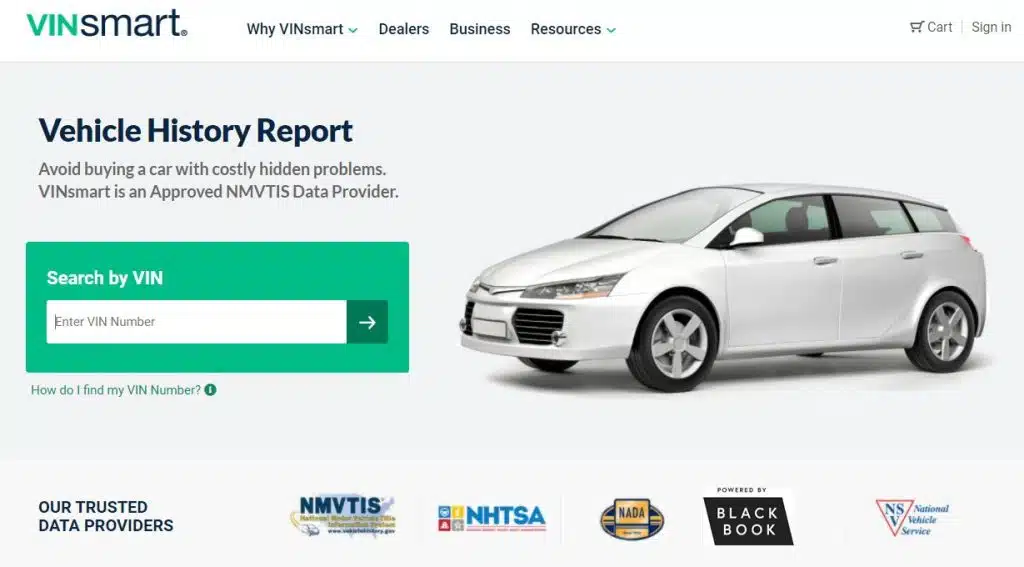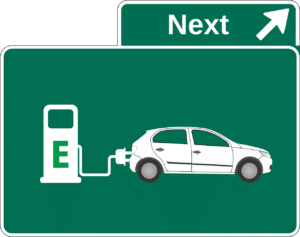The Vehicle Identification Number (VIN) is one of the most important identifying marks on your vehicle. This number gives you a complete history of the vehicle. Starting from where it was made and by what manufacturer, the VIN on your car distinguishes your car from other vehicles.
Additionally, the VIN is also used to track your vehicle’s information after it has been initially sold. This gives used car buyers the ability to track repairs, recalls, and if the car’s title is good. The VIN will also show if the car has been subjected to fire or flood damage and if it has been considered totaled or salvage.
History of the VIN
VINs began to appear in the 1950s. Car manufacturers started using these vehicle identification numbers to track their production. With so many manufacturers selling to overseas destinations after World War II, the manufacturers needed a way to track these vehicles.
However, there was no set standard for the VIN, and manufacturers were using their own number of sequences that had their own meaning. The VIN finally became standardized in 1981. At that time, the VIN was changed to a 17 character string of numbers and capital letters. The letters I, O, and Q are not used in VIN sequences so that these letters are not confused with the number 1 or 0.
What Do The VIN Numbers Mean
The VIN sequence is divided into three sections. The first three digits are the World Manufacturer Identifier numbers. These digits will tell you what country the vehicle was manufactured in and the name of the manufacturer.
For example, if the first three digits are 1VW, the number 1 means that the vehicles were produced in the United States. The second two characters stand for Volkswagen. If the car were manufactured in Germany, the VIN would read WVW.
Any manufacturer that produces 500 or fewer vehicles per year will always use 9 for the third digit of their World Manufacturer number.
The second sequence, numbers 4-9, represent the Vehicle Descriptor Section. These digits are used by each manufacturer to distinguish internal information on the vehicles that they produce. These numbers and the information that they represent are unique to each manufacturer.
The third sequence, numbers 10-17, is known as the Vehicle Identifier Section. This section is basically a serial number for each vehicle. This number will provide the owner and the manufacturer with information about everything that came standard with this vehicle when it was manufactured. This sequence will allow the manufacturer to identify a specific vehicle at any time after it has left the manufacturing facility.
Other Uses For The Vehicle Identification Number
Once a vehicle leaves the manufacturer, the VIN is used to track all of the “life events” until such a time that it is sent to the scrap yard. The VIN is used to register your car, purchase insurance for your vehicle, and track repairs and accidents.
Any warranty claims, recalls, and subsequent repairs, accidents, and thefts will be attached to the vehicle’s VIN. This allows used car dealerships and future owners to have a history on the vehicle no matter where it originated from before purchase.
Using the VIN to track all of this information ensures that if a car is sold differently, all the information from the original state follows the vehicle. This protects consumers from purchasing stolen or salvaged vehicles.
Things To Remember About Vehicle Identification Numbers
– The VIN is found in three different areas of your car. It is important to verify that the VIN matches in all three areas and matches the title being offered for the car.
– The VIN will always appear on the registration, proof of insurance, and many repair bills for the vehicle.
– Insurance companies, repair shops, and car dealerships must report repairs and damages from accidents to the reporting agency to attach to the vehicle VIN. This is especially important when there is a total loss, or the vehicle has been in a fire or flood.
Stay Safe With VINSmart Vehicle History Reports

VINSmart provides individuals and auto dealerships with detailed VIN reports on any vehicle. If you are personally purchasing a vehicle or a dealers purchasing to resell, it will always be to your advantage to know the vehicle’s history before making that purchase.
Each VINsmart vehicle history report checks for:
- Title History – Get the current and historical titles and dates with DMV registrations
- Vehicle Value – Value reports include up-to-date retail, trade-in, and loan value
- Safety Recalls – Discover historical recalls and alert when new recalls coming in
- Prior Damage & Salvage Check – Flood damage, junk, or salvaged? Find out with data from multiple sources
- Title Concerns – 68-point check on brand including altered odometer, vandalism reports, and fire damage
- Lien & Lease Check – Correcting a lien can be time consuming and costly. We scan national lien & lease databases to check for a clear vehicle title
- VINsmart now also has an iOS speak the VIN App to save you time!
Providing your clients with a detailed VIN history of any car you are selling is also a great selling tool. Customers will feel more secure purchasing a vehicle that they know the history of and know that nothing could present a future problem.
The VIN on any vehicle offers a significant amount of information about a vehicle from when and where it was made to any accidents it has been involved in. Knowing this information allows everyone to make a good decision when selling/purchasing a used vehicle.





